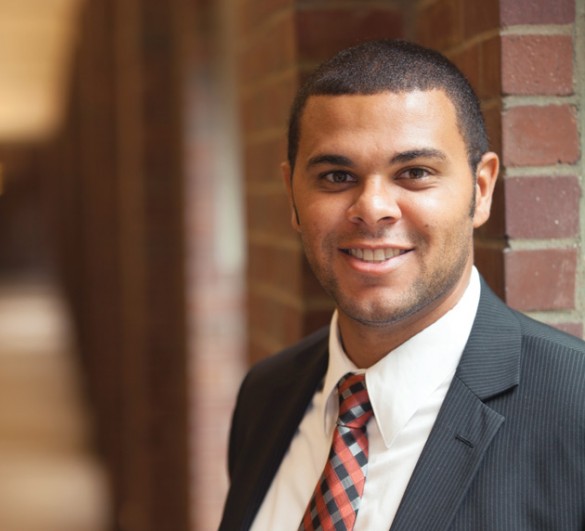
Karl Zelik’s BAT lab in Olin Hall has nothing to do with flying mammals or a caped superhero.
The Biomechanics and Assistive Technology laboratory is dedicated to locomotion—in particular, to understanding the mechanisms of human locomotion and using engineering to improve movement and mobility for people with impairments.
Zelik says it’s no surprise he was drawn to biomechanics, the study of motion and force as it applies to biological systems. “[rquote]Since a young age, I’ve been testing the limits of the human body—specifically, my own,” he said.[/rquote] “I grew up in a family of four boys and was active in sports for most of my life. I broke a lot of bones and got a lot of stitches.”
In college, Zelik discovered biomedical engineering, “which was kind of an academic way to test the limits of the human body,” he said. “I was immediately hooked.”
Additional engineering and science classes fueled his fascination with movement, bionics and eventually, prosthetic technology. Zelik’s work centers on improving mobility for lower-limb amputees by discovering the biological mechanisms behind human movement and using that knowledge to improve prosthetic limbs and other bionic technology.
A lot of current prosthetic foot research focuses on developing a better prosthetic ankle, Zelik said. He wants to delve further into the biological foot to see how to reproduce its complicated structure of bones, muscles and tendons. “We don’t understand quite as well how that contributes to walking or locomotion,” he said, “so my interest is to better understand this complexity and discover if we can then build that into prosthetic feet so that ankle and foot function are restored.”
He’s also researching how human musculature crosses joints and connects different segments of the leg. Reproducing that in a prosthetic could make walking less difficult for amputees, who may expend anywhere from 15 to 100 percent more energy to walk than nonamputees.
Zelik, who just spent two years in Italy conducting postdoctoral research at Fondazione Santa Lucia, was drawn to Vanderbilt by a mechanical engineering department with a world-class reputation in prosthetic and mechatronic design, and by its track record in trans-institutional projects with Vanderbilt University Medical Center. He’s looking forward to teaching, working on collaborative projects and exploring new ideas to help the more than 30 million Americans with locomotor impairment.
“Locomotor impairments can prevent people from engaging in activities that are socially, mentally, physically and emotionally fulfilling,” Zelik said. “By advancing assistive technology, we have the opportunity to make huge improvements in the health and livelihoods of individuals.”
View the complete list of new university faculty for 2014-15.
View the complete list of new medical faculty for 2014.